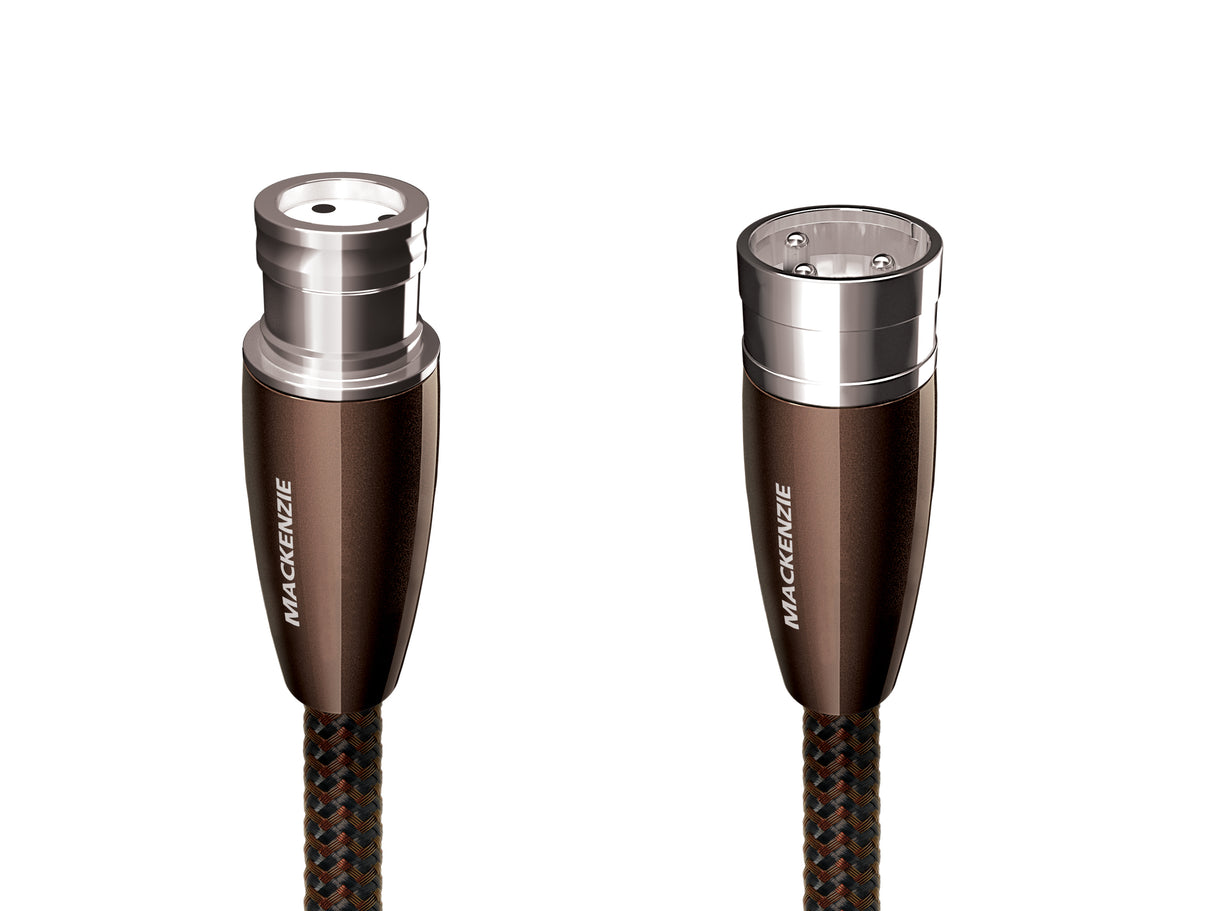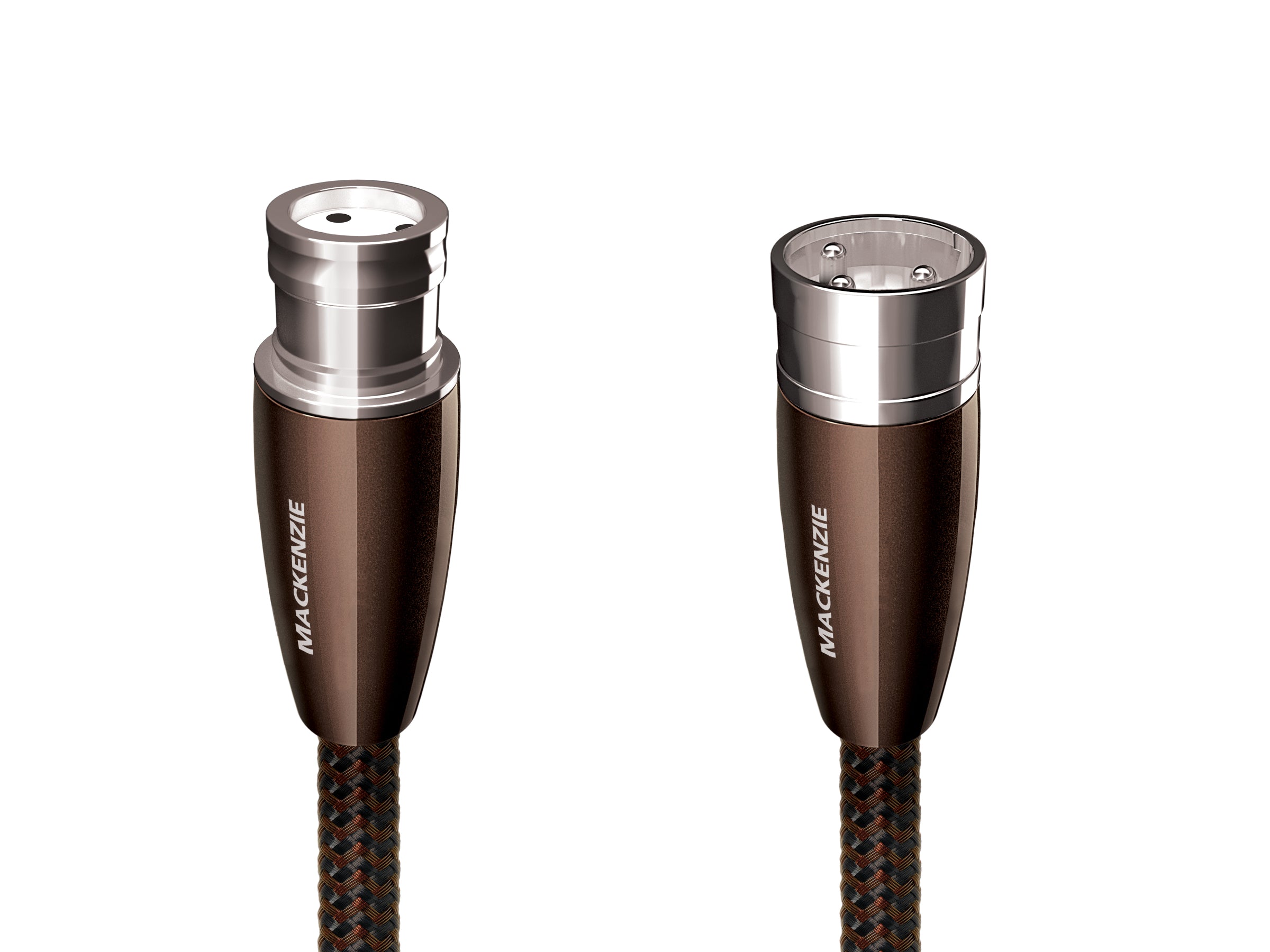AudioQuest Mackenzie 2XLR to 2XLR Analogue Cable
Couldn't load pickup availability
Mackenzie XLR to XLR Analog Audio Interconnect Cable
Connect audio source components to amplifiers and receivers with the AudioQuest Mackenzie XLR to XLR analog-audio cable. Designed for exceptional performance, it features Solid Perfect-Surface Copper+ (PSC+) conductors to minimise distortion, Foamed-Polyethylene insulation to preserve dynamic contrasts, and a Carbon Mesh-Network Noise-Dissipation system to efficiently dissipate high-frequency noise. The result is cleaner, clearer, and more naturally beautiful music.
Solid Perfect-Surface Copper+ (PSC+) Conductors
The use of Solid Perfect-Surface Copper+ (PSC+) conductors eliminates electrical and magnetic strand-interaction, significantly reducing distortion. PSC+ Solid-Copper is engineered to minimise grain boundary-induced distortion while maximizing linear RF noise dissipation.
Carbon-Based 3-Layer Noise-Dissipation
Achieving 100% shield coverage is straightforward; however, preventing captured Radio Frequency Interference (RFI) from affecting the equipment's ground reference requires AudioQuest's Noise-Dissipation System (NDS). Traditional shielding systems tend to absorb and drain noise/RF energy to the component ground, which can distort the critical "reference" ground plane and the signal. NDS employs alternating layers of metal and carbon-loaded synthetics to "shield the shield," absorbing and reflecting most noise/RF energy before it reaches the ground layer.
Direction-Controlled Conductors
Drawn metal strands or conductors inherently possess a non-symmetrical, directional grain structure. AudioQuest meticulously controls the RF impedance variation to ensure that noise is diverted away from areas where it could cause distortion. The correct direction is determined through listening tests on every batch of metal conductors used in AudioQuest cables. Arrows on the connectors indicate the optimal direction for metal-directionality and Noise-Dissipation, as well as the non-symmetrical attachment of the shield and ground (GND) for optimized full-system performance. This ensures induced noise is properly dissipated and drained.
Triple-Balanced Geometry
AudioQuest's Triple-Balanced Geometry incorporates a separate ground-reference conductor, ensuring the cable's shield is not used as an inferior conductor. Whether terminated with RCA or XLR plugs, the three conductors ensure that both positive and negative signals have superior, low-distortion conducting paths.
Hard-Cell Foam Insulation
Hard-Cell Foam (HCF) Insulation maintains critical signal-pair geometry. Solid materials adjacent to a conductor contribute to an imperfect circuit by absorbing energy, which is then released as distortion. Similar to the Foamed-PE used in AudioQuest's more affordable Bridges & Falls cables, HCF Insulation is nitrogen-injected to create air pockets. Since nitrogen, like air, does not absorb energy, it prevents energy release into the conductor, thus reducing distortion. The material's stiffness also helps maintain stable conductor geometry throughout the cable's length, further minimising distortion and ensuring stable impedance.
Cold-Welded, Hanging-Silver Directly Over Pure Purple Copper Terminations
This advanced termination method uses a high-pressure cold-welding technique, eliminating the need for solder, which is a common source of distortion. The ground shells are stamped rather than machined, allowing the use of metals chosen for low distortion rather than machinability.
Specification
|
Metal:
|
ZERO: Solid Perfect-Surface Copper+ (PSC+) / BASS: Solid Perfect-Surface Copper+ (PSC+)
|
|---|---|
|
Noise Dissipation:
|
Carbon Mesh-Network
|
|
Geometry:
|
Triple-Balanced
|
|
Insulation:
|
|
|
Terminations:
|
|
|
Signal Type:
|
|
|
Cable Length:
|
0.5 m = 1 ft 7 in
|
|
Jacket:
|
Brown on Black Braid
|
|
Sold As:
|
|
|
Weight:
|
0.85 lb
|
Payment & Security
We value your privacy. Your payment information is processed securely. We do not store credit card details nor have access to your credit card information.




